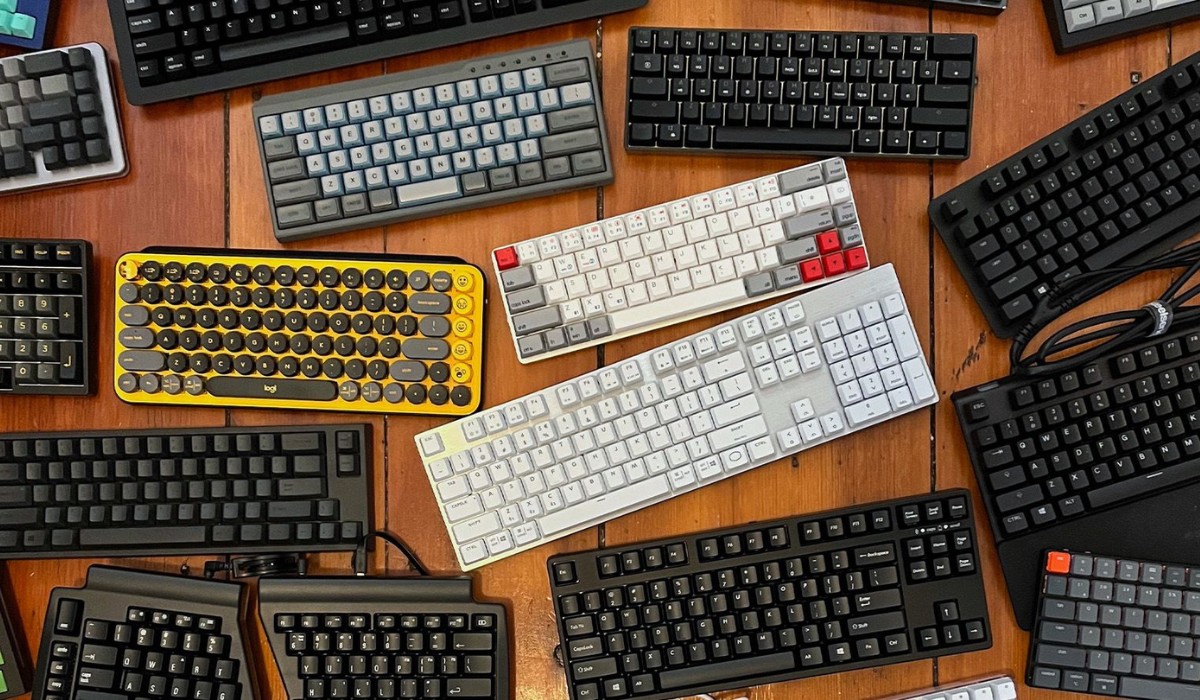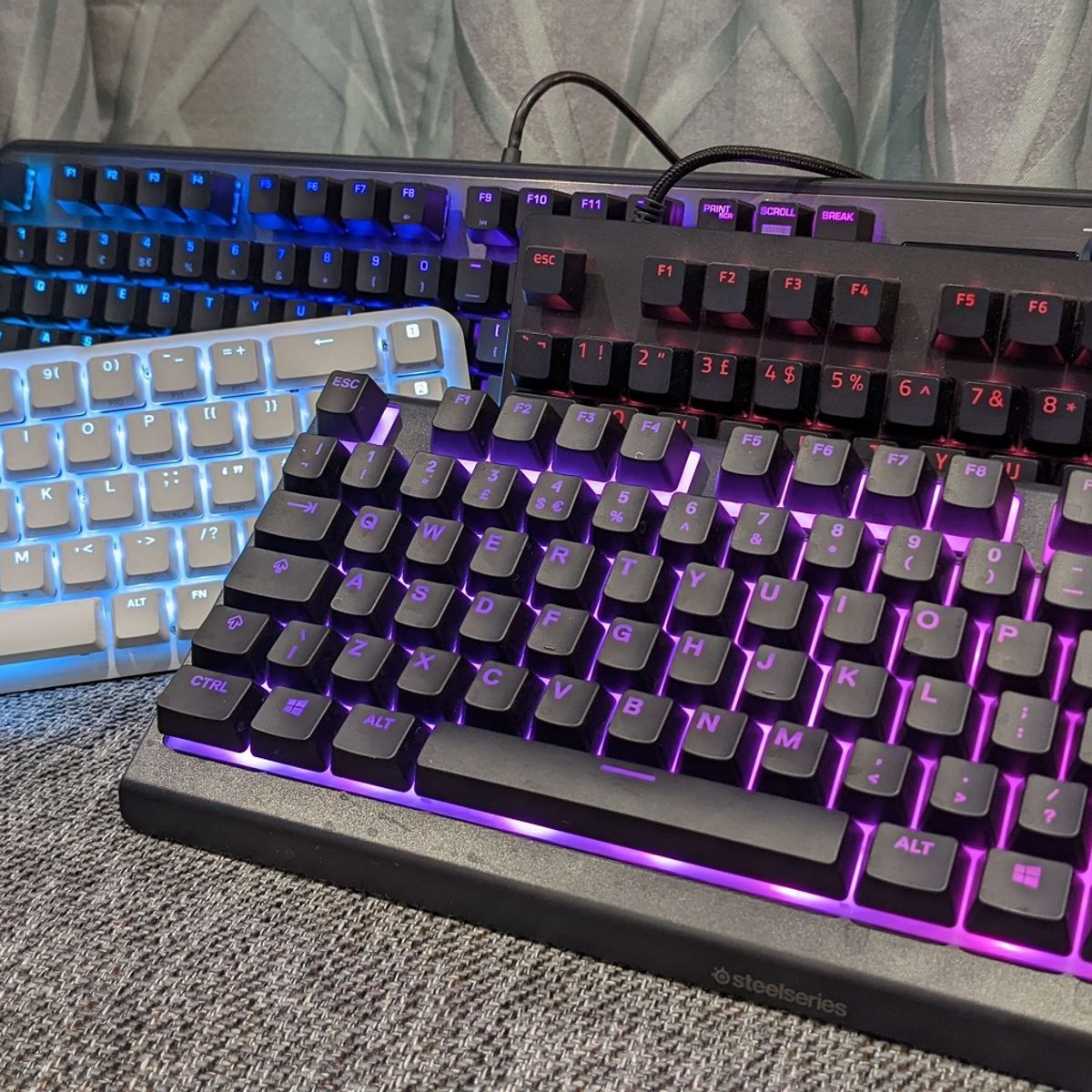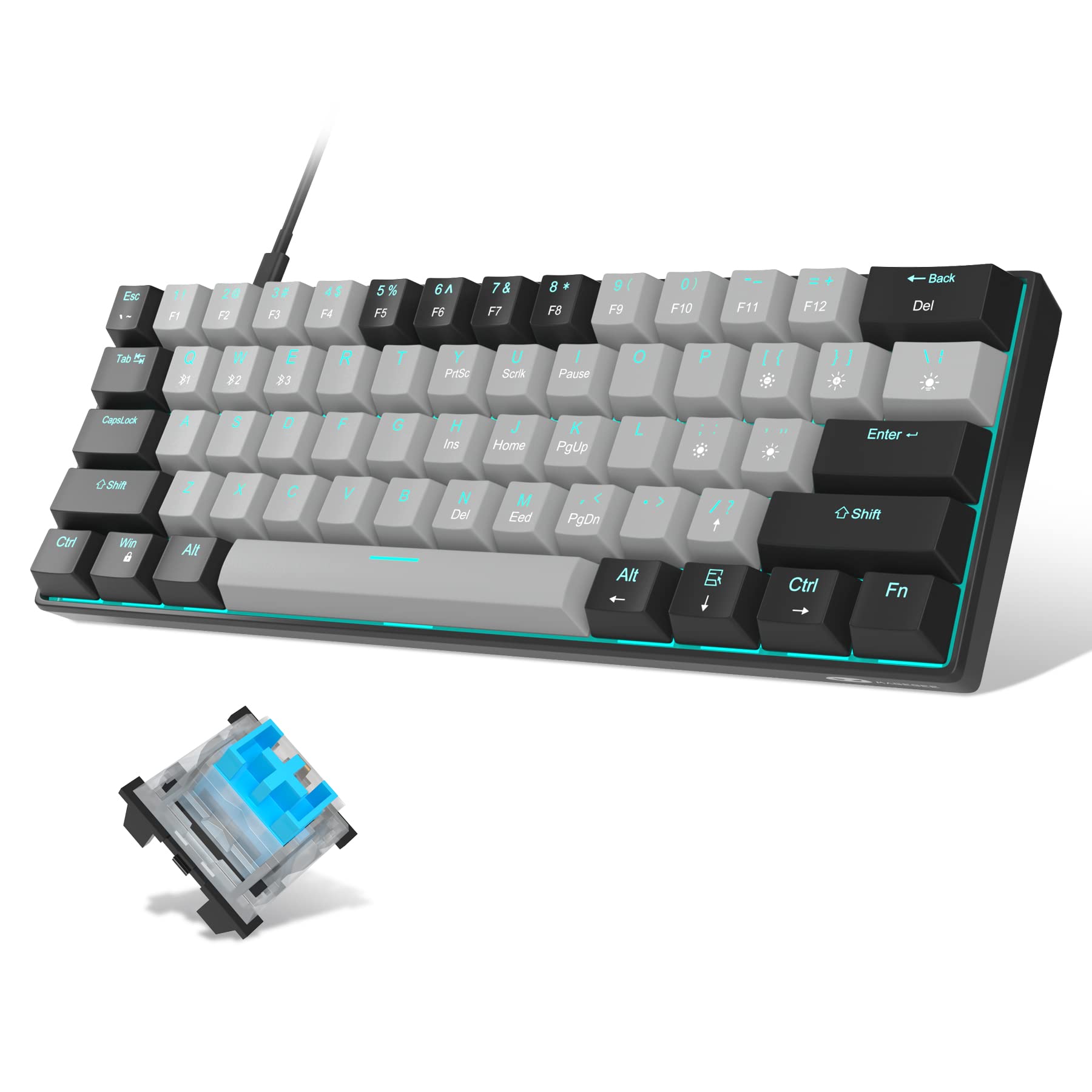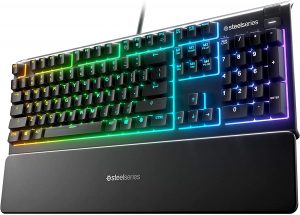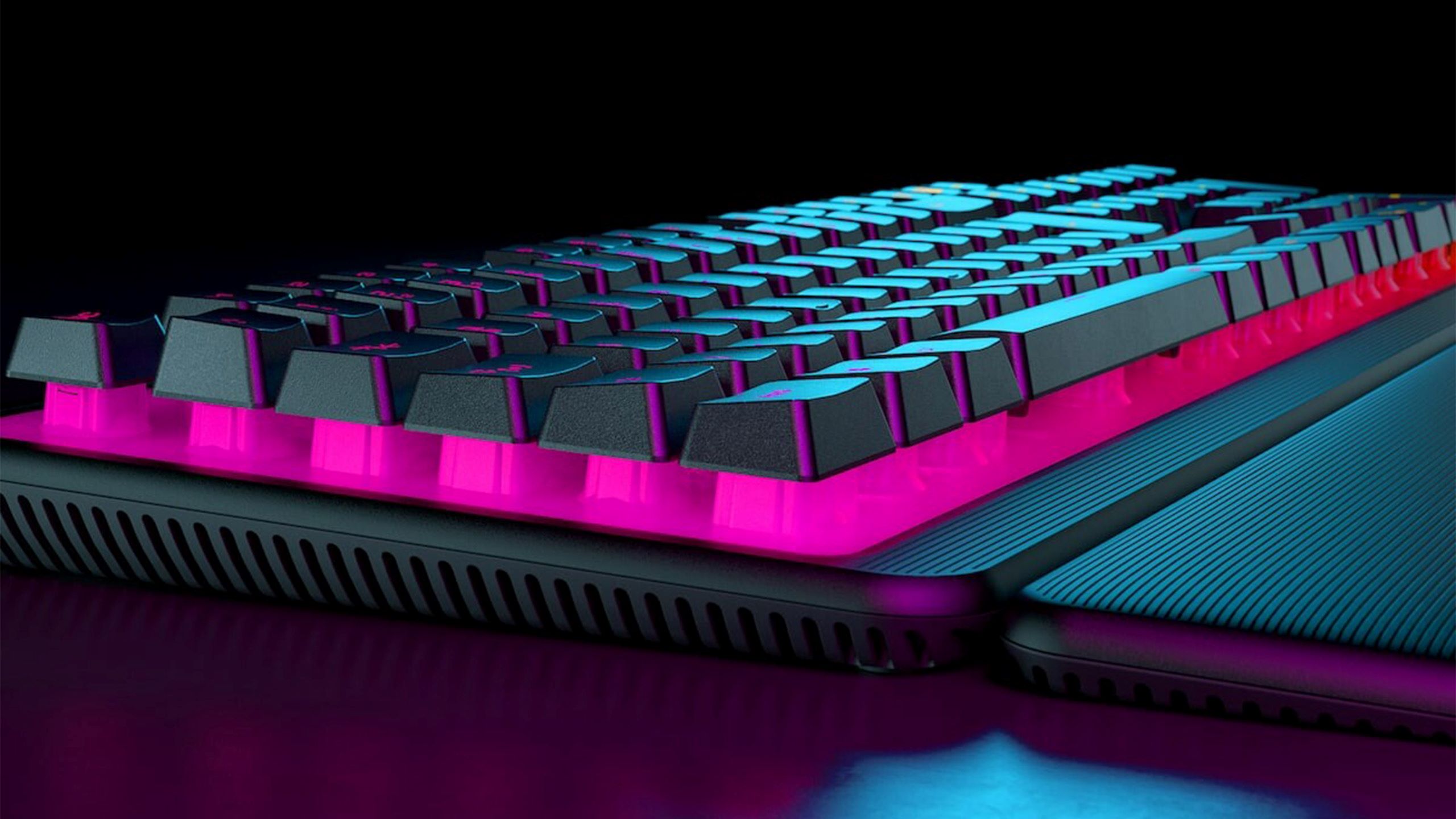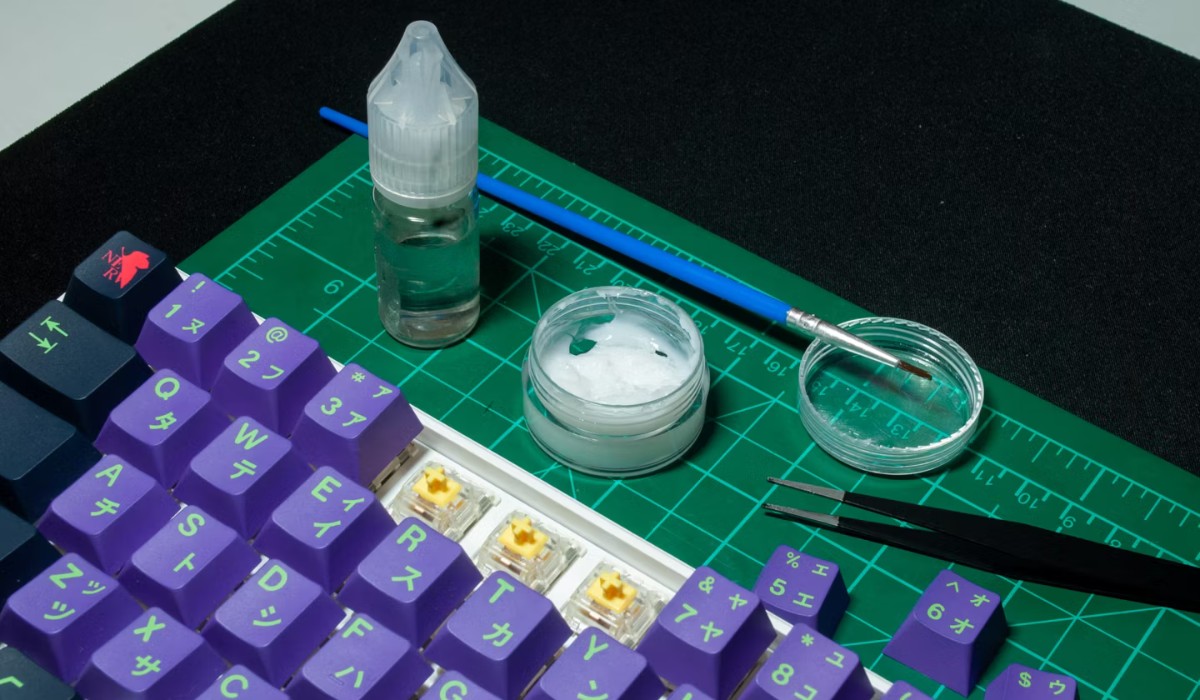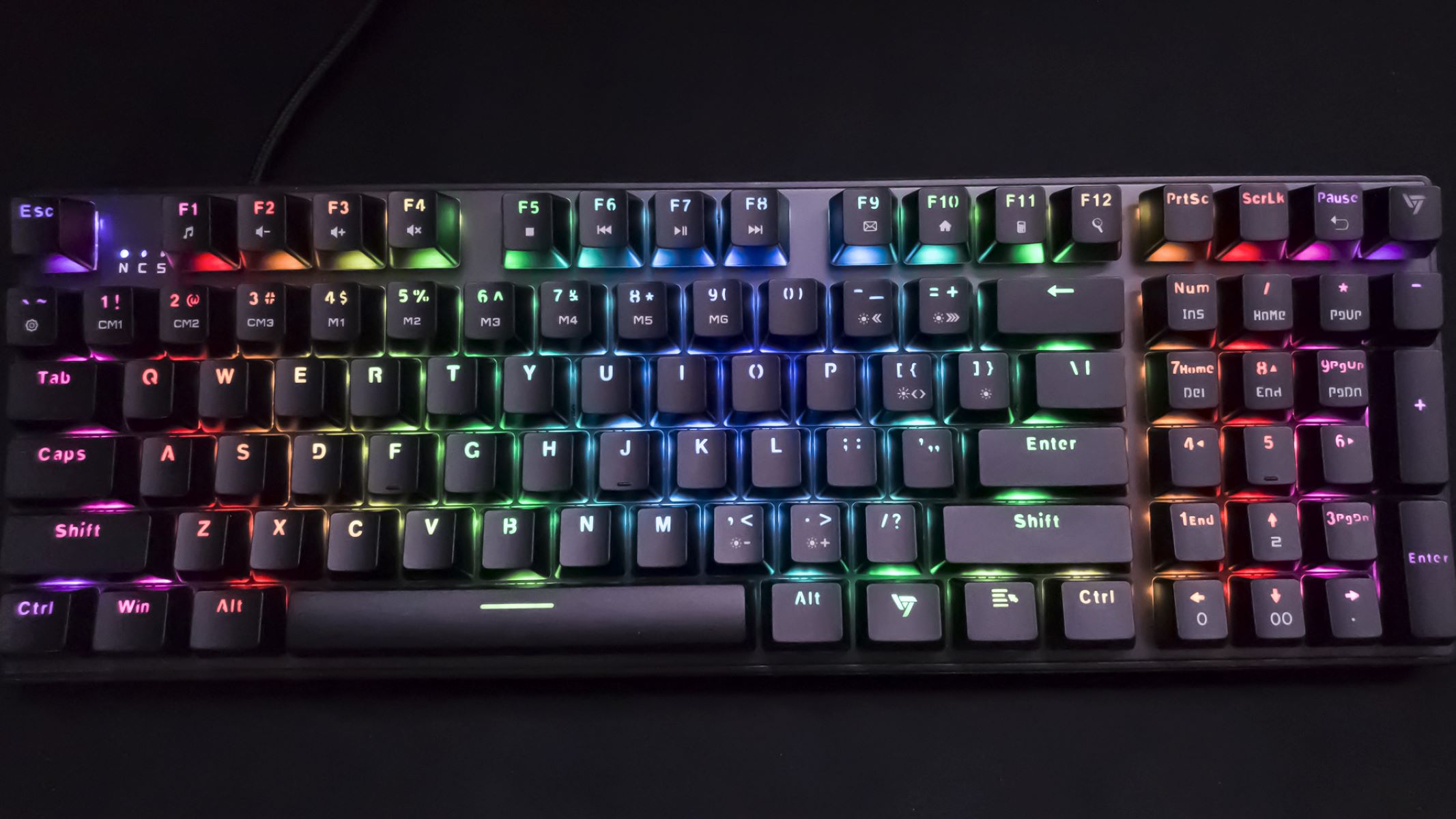Introduction
Are you someone who appreciates the satisfying click-clack sound of a mechanical keyboard? Or perhaps you've found yourself wondering why some people are so enamored with the feel of typing on one. Well, you're not alone. Mechanical keyboards have garnered a dedicated following due to their unique tactile feedback and overall typing experience. Explaining to someone why a mechanical keyboard feels so good involves delving into the intricate design and engineering behind these devices.
The allure of a mechanical keyboard lies in its distinct tactile response, audible feedback, and overall durability. Whether you're a writer, programmer, or avid gamer, the sensation of typing on a mechanical keyboard can be a game-changer. In this article, we will explore the fascinating world of mechanical keyboards, uncovering the science behind their exceptional feel and explaining the various factors that contribute to their appeal.
So, if you've ever been curious about the magic that happens beneath the keys of a mechanical keyboard, prepare to embark on a journey through the intricate mechanisms and design elements that make these keyboards a beloved choice for many enthusiasts. Whether you're a seasoned mechanical keyboard aficionado or someone who's simply intrigued by the hype, this exploration will shed light on the captivating reasons why a mechanical keyboard feels so good.
What is a Mechanical Keyboard?
A mechanical keyboard is a type of keyboard that utilizes individual mechanical switches for each key, as opposed to the membrane or rubber dome switches found in most traditional keyboards. These switches are responsible for the distinct tactile feedback and audible click that typify the mechanical keyboard experience. The design of a mechanical keyboard allows for the key switches to actuate with a consistent level of force, providing a more responsive and precise typing feel compared to membrane keyboards.
One of the defining characteristics of mechanical keyboards is their durability. The individual switches are designed to withstand tens of millions of keystrokes, making them exceptionally long-lasting and reliable. This durability is a significant factor in the appeal of mechanical keyboards, especially for users who require a keyboard that can withstand heavy daily usage without compromising performance.
Furthermore, mechanical keyboards offer a wide range of switch options, each with its own unique feel and sound. This variety allows users to select a switch type that aligns with their personal preferences, whether they prioritize a smooth and silent typing experience or a more tactile and audible one. The versatility of mechanical keyboards in terms of switch options caters to a diverse audience, ensuring that there’s a suitable choice for every user.
Additionally, the construction of mechanical keyboards often includes a solid metal backplate, contributing to their robust build quality and structural integrity. This feature enhances the overall stability of the keyboard, reducing flex and providing a premium feel that is absent in many membrane keyboards.
Ultimately, a mechanical keyboard embodies a meticulous approach to design and functionality, offering a superior typing experience that resonates with a broad spectrum of users, from professionals seeking efficiency to enthusiasts passionate about the art of typing.
The Science Behind the Feel
The exceptional tactile and auditory feedback of a mechanical keyboard can be attributed to the intricate science behind its design. At the core of this phenomenon are the individual switches beneath each keycap. These switches are meticulously engineered to provide a distinct tactile response and audible click, creating a sensory typing experience that resonates with enthusiasts.
When a key is pressed on a mechanical keyboard, the switch mechanism activates, registering the keystroke. The design of the switch determines the type of feedback the user will experience. Tactile switches, for instance, feature a noticeable bump as the key is pressed, providing tactile feedback to the typist. This tactile feedback is a result of the switch’s internal components interacting to create resistance and a tactile sensation, enhancing the typing experience with a discernible tactile response.
Furthermore, the audible click characteristic of certain mechanical switches adds an auditory dimension to the typing process. Clicky switches are engineered to produce an audible click sound when the key is actuated, contributing to the overall sensory satisfaction of typing on a mechanical keyboard. This auditory feedback not only enhances the typing experience but also serves as an auditory cue, confirming that the keypress has been registered.
Moreover, the material composition of the switch components plays a crucial role in the tactile and auditory feedback. The precise engineering of the switch components, including the stem, spring, and housing, influences the force required to actuate the key, the tactile sensation experienced, and the sound produced during typing. These meticulous design elements are meticulously calibrated to deliver a consistent and satisfying typing experience.
In essence, the science behind the feel of a mechanical keyboard encompasses a symphony of meticulously crafted components working in harmony to deliver a tactile and auditory typing experience that captivates users. The precise engineering and deliberate design choices result in a keyboard that transcends mere functionality, offering a sensory journey with each keystroke.
Tactile vs. Linear vs. Clicky Switches
When exploring the world of mechanical keyboards, one encounters a diverse array of switch options, each offering a unique typing experience. Understanding the differences between tactile, linear, and clicky switches is essential for selecting a switch type that aligns with individual preferences.
Tactile Switches
Tactile switches are characterized by a noticeable bump in the key travel, providing tactile feedback to the typist upon actuation. This tactile sensation enhances the typing experience by offering a discernible indication of when the keypress is registered. The tactile feedback of these switches appeals to individuals who prefer a more pronounced and responsive feel while typing, contributing to a satisfying and tactile typing experience.
Linear Switches
Linear switches, in contrast, lack the tactile bump present in tactile switches. They offer a smooth and consistent keystroke from top to bottom without any tactile feedback, making them popular among users who prioritize a linear and uninterrupted typing experience. The linear action of these switches allows for rapid and fluid keystrokes, appealing to those who seek a seamless and predictable typing feel.
Clicky Switches
Clicky switches combine tactile feedback with an audible click sound upon actuation, creating a distinct typing experience that engages both the tactile and auditory senses. The tactile bump provides feedback to the typist, while the audible click enhances the overall typing experience by adding an auditory dimension to each keystroke. Clicky switches are favored by individuals who appreciate a pronounced tactile response and enjoy the satisfying click sound that accompanies each keypress.
The variety of switch options available in mechanical keyboards caters to diverse user preferences, allowing individuals to tailor their typing experience to suit their specific needs and preferences. Whether one seeks a tactile, linear, or clicky typing experience, the availability of different switch types ensures that there is a suitable option for every user, contributing to the widespread appeal of mechanical keyboards.
Keycap Material and Profile
Keycaps are a crucial element of the typing experience on a mechanical keyboard, and their material and profile significantly impact the overall feel and aesthetics of the keyboard. Understanding the different keycap materials and profiles is essential for enthusiasts seeking to customize their typing experience and achieve a personalized aesthetic appeal.
Keycap Materials
Keycaps are commonly crafted from a variety of materials, each offering distinct tactile and visual characteristics. ABS (Acrylonitrile Butadiene Styrene) keycaps are known for their smooth and lightweight feel, often featuring a glossy finish that lends a sleek appearance to the keyboard. PBT (Polybutylene Terephthalate) keycaps, on the other hand, are revered for their durability and resistance to wear, providing a textured and more robust feel compared to ABS keycaps. The choice between ABS and PBT keycaps allows users to tailor the typing experience to their preferences, whether they prioritize a smooth and lightweight feel or a textured and durable one.
Furthermore, keycap materials can also influence the sound produced during typing. PBT keycaps, with their denser composition, tend to produce a deeper and more muted sound compared to ABS keycaps, which may produce a higher-pitched and more resonant sound. The acoustic characteristics of keycap materials contribute to the auditory aspect of the typing experience, adding another dimension to the overall feel of the keyboard.
Keycap Profiles
Keycap profiles refer to the shape and contour of the keycaps, influencing the ergonomics and aesthetics of the keyboard. Common keycap profiles include OEM, Cherry, DSA, and SA, each with its own unique shape and height. The OEM profile, characterized by a slightly curved top surface and cylindrical shape, is a popular and versatile choice, offering a comfortable and familiar typing experience. The Cherry profile, known for its low height and gentle slope, provides a more compact and streamlined appearance, appealing to users seeking a sleek and modern aesthetic.
Additionally, the DSA and SA profiles offer alternative shapes and heights, allowing enthusiasts to customize the look and feel of their keyboard to a greater extent. The DSA profile features a uniform, spherical shape across all keys, while the SA profile boasts a sculpted design with varying key heights, catering to individuals who prioritize a unique and visually striking keycap arrangement.
Ultimately, the selection of keycap materials and profiles empowers mechanical keyboard enthusiasts to curate a typing experience that aligns with their preferences and aesthetic sensibilities. Whether prioritizing durability, texture, sound, or visual appeal, the diverse options in keycap materials and profiles contribute to the customizability and allure of mechanical keyboards.
The Role of Stabilizers
Stabilizers are an essential component of a mechanical keyboard, playing a pivotal role in ensuring consistent and smooth keycap movement, particularly for larger keys such as the spacebar, shift, and enter keys. These stabilizers, also known as stabilizing bars or wires, are integral to maintaining keycap stability and preventing excessive wobbling or uneven movement during typing. Understanding the function and significance of stabilizers is crucial for enthusiasts seeking to optimize the typing experience on their mechanical keyboards.
One of the primary functions of stabilizers is to minimize the lateral and vertical movement of larger keycaps, which are more prone to instability due to their size and weight. Without stabilizers, these larger keys may exhibit uneven or inconsistent travel, leading to an unsatisfactory typing experience characterized by wobbliness and reduced stability. Stabilizers address this issue by providing balanced support and guidance to the keycap, ensuring that it moves smoothly and uniformly during typing.
Stabilizers achieve this by employing a combination of components, including stabilizing bars or wires, inserts, and housing mechanisms. These components work in unison to maintain the alignment and movement of the keycap, preventing lateral shifts and minimizing the potential for binding or sticking during key actuation. The careful engineering and placement of stabilizers contribute to the overall stability and consistency of keycap movement, enhancing the typing experience for users.
Moreover, the design of stabilizers also influences the sound produced during typing, particularly for larger keys. Properly lubricated and well-designed stabilizers can mitigate the potential for rattling or excessive noise, resulting in a more refined and pleasant typing acoustics. The absence of stabilizers or the use of subpar stabilizer components can lead to distracting and inconsistent sound profiles, detracting from the overall typing experience.
Furthermore, the customization and optimization of stabilizers through modifications and upgrades have become a popular pursuit among mechanical keyboard enthusiasts. Lubricating stabilizers with high-quality lubricants, adjusting their tension, or even replacing stock stabilizers with aftermarket alternatives are common practices aimed at fine-tuning the feel and performance of stabilizers, ultimately enhancing the typing experience and keycap stability.
In essence, the role of stabilizers in a mechanical keyboard extends beyond mere structural support; it encompasses the refinement of keycap movement, the mitigation of noise, and the potential for personalized optimization. By understanding and leveraging the function of stabilizers, enthusiasts can elevate the stability, consistency, and overall typing satisfaction of their mechanical keyboards.
Conclusion
Delving into the realm of mechanical keyboards unveils a captivating fusion of engineering, design, and sensory experience. The allure of these keyboards lies not only in their exceptional durability and precision but also in the intricate mechanisms that underpin their tactile and auditory feedback. From the meticulous design of the switches to the customizability of keycap materials and profiles, every facet of a mechanical keyboard contributes to a typing experience that transcends mere functionality.
Furthermore, the diverse array of switch options, including tactile, linear, and clicky switches, ensures that users can tailor their typing experience to align with their specific preferences, whether they seek pronounced tactile feedback, smooth and uninterrupted keystrokes, or a combination of tactile and auditory satisfaction. This versatility caters to a broad spectrum of users, from professionals seeking efficiency to enthusiasts passionate about the art of typing.
Keycap materials and profiles further enrich the customization potential of mechanical keyboards, allowing enthusiasts to curate a typing experience that harmonizes with their tactile and visual sensibilities. The durability and texture of keycap materials, coupled with the ergonomic and aesthetic considerations of keycap profiles, contribute to a personalized and immersive typing experience.
Additionally, the role of stabilizers in ensuring consistent keycap movement and mitigating noise underscores the meticulous attention to detail that defines the world of mechanical keyboards. The potential for customization and optimization further empowers enthusiasts to refine the stability, sound, and overall typing satisfaction of their keyboards, elevating the experience to new heights.
Ultimately, the magic of a mechanical keyboard lies in its ability to transform typing into a sensory journey, engaging the tactile, auditory, and visual senses with each keystroke. Whether it’s the satisfying click of a switch, the smooth travel of a keycap, or the visual allure of a customized keycap set, the appeal of a mechanical keyboard is a testament to the artistry and engineering prowess that converge to create a truly exceptional typing experience.
So, whether you’re a seasoned mechanical keyboard enthusiast or someone embarking on a journey to discover the allure of these devices, the world of mechanical keyboards invites you to explore, customize, and savor the unparalleled sensation of typing on a meticulously crafted keyboard that feels as good as it looks.







